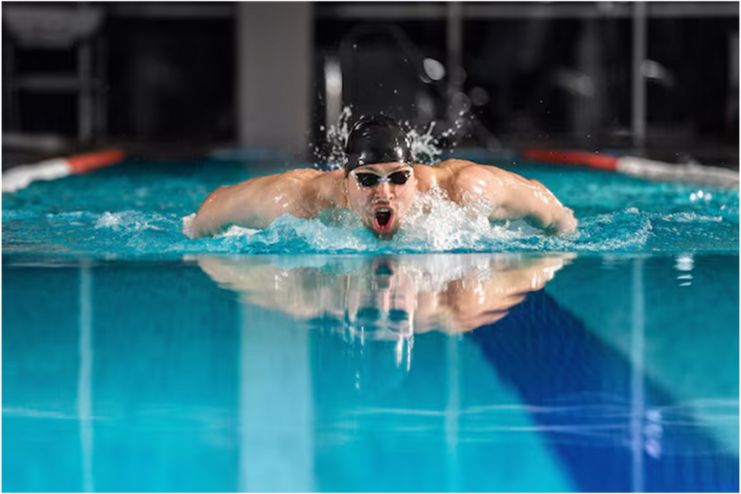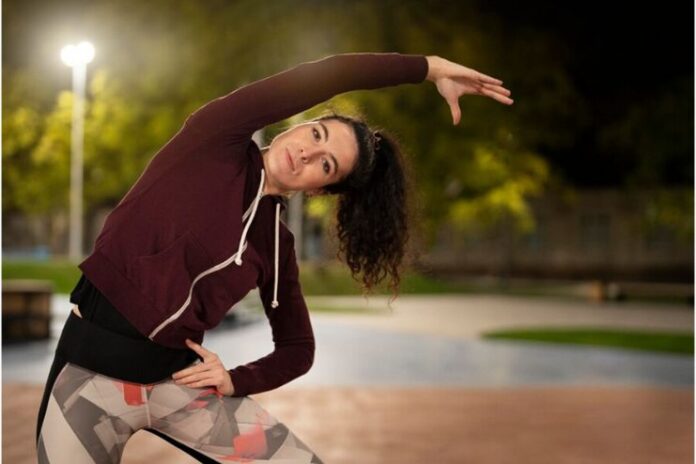Affiliate Disclaimer
Some links in this article are affiliate links. We may earn a small commission if you make a purchase through these links, at no extra cost to you. We only recommend products we find useful to our readersAfter an intense workout, your body does not require complete rest, it needs much more. Your body needs slow, light movements that help relieve soreness and prepare you for the next workout session. This is called ‘active recovery’.
NIH suggests indulging in active recovery and exercising lightly on rest days to achieve your fitness goals. This is as important as your regular workout and helps maximize your fitness results.
Active recovery speeds up muscle healing while maintaining movement and flexibility. Involving in light exercises on rest days is beneficial for optimum blood flow, preventing stiffness, and having an overall active routine instead of being sedentary. Once you start including active recovery days in your routine, you will witness an overall performance surge, improved stamina, and less likelihood of injuries. All you need to do is indulge in minimum activities on recovery days to help you stay fit longer.
Active recovery includes low-intensity activities such as yoga and walking, which help prevent overtraining. Overtraining can cause muscle soreness and negatively affect overall performance. Rest days should not be entirely inactive; engaging in light activities is essential for maintaining recovery and overall fitness.
What Is Active Recovery?

Active recovery refers to low-intensity exercises. These exercises help you stay active and promote muscle recovery without additional muscle strain.
Intense workouts without rest can lead to overtraining, which can cause physical and mental burnout. Active recovery allows your body to remain active while preventing lethargy and optimizing performance.
Replacing total rest with light activities boosts muscle recovery, promotes blood circulation, and maintains shape. It also helps clear blood lactate, reduce fatigue, and enhance readiness for your next workout. Exercising lightly on rest days keeps your body’s momentum, helps replenish energy, and gets you closer to your goal with a well-planned fitness routine.
Active recovery is distinct from intense training, which puts strain on muscles and the body, necessitating longer recovery periods. It promotes proper blood circulation, enhances muscle flexibility, and facilitates relaxation without leading to overtraining.
Active recovery helps you maintain a consistent routine, keeping you active even on rest days. This can eventually lead to better movement patterns, and long-term joint health and provide overall energy for your next workout.
Benefits of Active Recovery:
- Reduces Muscle Soreness and Stiffness:
Intense workouts can lead to delayed onset muscle soreness (DOMS), which peaks 24–72 hours after exercise. Active recovery promotes blood flow, reduces stiffness, and aids nutrient delivery and waste product removal, preparing you for your next workout. - Improves Circulation and Nutrient Delivery to Muscles:
Increased heart rate during active recovery enhances blood flow. Improved circulation helps deliver essential nutrients like glucose and oxygen to fatigued muscles, aiding repair and better performance. - Boosts Mental Recovery and Stress Reduction:
Active recovery also benefits mental health. Deep breathing and relaxation exercises reduce stress levels and restore mental focus, making it a rejuvenating break for those with busy lifestyles.
Incorporating Active Recovery:

Active recovery involves gentle movement, which allows your body to recover while staying active. Including a variety of low-intensity exercises helps maintain consistency as well as supports muscle repair.
Here are a few key active recovery activities to include in your routine:
- Foam Rolling: Releases muscle tension, enhances elasticity, and breaks up knots for faster recovery. Use a foam roller for myofascial release, relieving tightness and enhancing your range of motion.
- Mobility Exercises: Dynamic stretches and joint mobility exercises improve range of motion and prevent injuries.
- Light Cardio or Walking: Cycling or jogging keeps muscles engaged without overexertion, aiding flexibility and blood circulation.
- Tai Chi: Tai Chi is a meditative practice that combines slow movements with deep breathing. It can benefit you in many ways, including improving balance and reducing stress.
- Swimming: Going for a swim can help you in a full-body workout, giving minimum joint impact. This provides muscle relaxation as well as better blood circulation.
- Hiking: Hiking keeps you active, reduces mental stress, and helps you connect more with nature. Including hiking in your active recovery exercises can be a win-win.
- Elliptical Training: If you wish to put a minimum strain on your joints, try elliptical training. This is low-impact and targets various muscle groups.
- Cycling: Try cycling at a leisurely speed, indoors or outdoors, as a low-impact option that’s gentle on joints.
- Light Yoga: Yoga helps calm the mind and body. Light yoga improves muscle flexibility by stretching. Consider an online yoga class to recover both physically and mentally.
- Stretching: Increases flexibility and helps prevent injury by keeping muscles supple.
Active recovery helps repair soft tissues, improve blood flow, and optimize nutrient delivery.
Avoid These Mistakes on Active Recovery Days
- High-Impact Exercises: Avoid sprints or jumps that strain muscles. When you exercise with high intensity, you put unnecessary stress on your joints and muscles, which might lead to injury.
- Overtraining: Keep recovery light to avoid defeating the purpose. When you overtrain or overexert, you put a halt to your progress. Keeping light is right.
- Ignoring Pain Signals: Never push through discomfort. Pushing yourself beyond safe limits can be harmful and stressful at once.
- Skipping Stretching: Stretch adequately to maintain flexibility. Muscle stiffness can hinder your performance. Stretch yourself to avoid this, and maintain flexibility.
- Neglecting Complete Rest Days: Occasionally, full rest days with minimal activity are necessary. The rest days allow you to recharge and repair. This ensures you are prepared for the next workout sessions.
Key Tips for Active Recovery:

Here are a few important tips on your active recovery day.
- Focus on low-intensity activities to stay lightly active. Walking, swimming, or cycling are seamless activities that provide significant relief on rest days while giving you ample mobility. These activities keep you in motion without making your muscles sore.
- Blend activities for variety and to target different muscle groups. Include a mix of low-intensity workouts like yoga, tai chi, and walking. This not only helps you have variety but also aids in preventing overtraining. A mix of workouts on your rest day can help you have a balanced routine.
- Stay hydrated and eat balanced, nutrient-dense meals. Proper hydration is the key to muscle function and repair. It helps discharge waste and toxins and replenish lost fluids. Be mindful to include a nutrient-rich diet along with proper hydration to get the best results on your active recovery day. This helps sustain your energy level throughout the process.
- Ensure sufficient sleep. If the body aches prevent rest, light walking or swimming can help.
Conclusion:
Active recovery is very important when we talk about sustainable fitness. It helps overall wellness, supports mental well-being, and helps plan for the next intense workout. You might be tempted to take a completely lazy rest day. However, an active recovery day can be a better option as it allows you to relax and build fitness. Including light activities such as yoga, tai chi, swimming, and elliptical exercises on your rest day can add more benefits. A good, active recovery amidst your routine helps build a stronger and fitter version of yourself!
In this Article



















